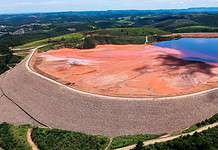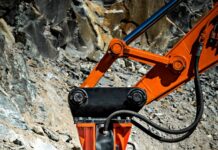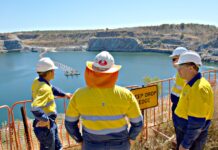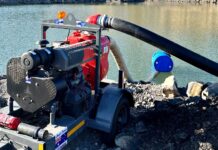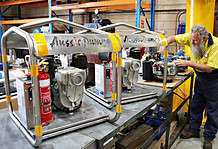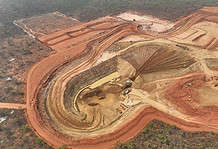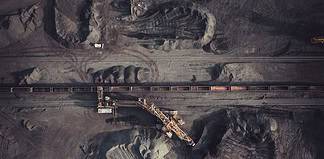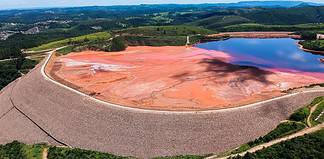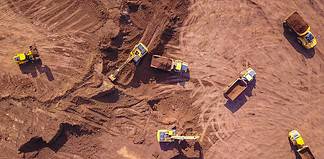WHITEHAVEN Coal has reported a record year amid falling coal prices, and has released its strategy to face climate change head on.
The company reported a record net profit after tax before significant items of $564.9m, which put it up 8pc from FY18.
This improved the total cash generated to $964.1m, and reduced net debt to $161m at June 30.
ROM coal production was up 4pc on 2018 to 18.4mt, and both the Narrabri and Maules Creek mines’ strong finish to the year enabled the company to exceed production guidance.
It reported an underlying NPAT of $564.9m and produced 23.2mt of ROM coal.
This allowed it to declare 50c per share dividend for the year and payed out dividends equivalent to 88pc NPAT.
Whitehaven Coal chief executive Paul Flynn said that he was excited about the company’s outlook and was looking to transform the business to almost double the production capacity,
“We are in the middle of a significant transition,” he said.
“This includes moving from operating five mines that produce about 23mt of coal annually to four major mines that will produce around 40mt within the next decade.”
Maules Creek
Production of ROM coal increased from 11mt to 11.7mt in FY2019, while the saleable production of coal was down from 9664mt to 9200mt.
The company said that this was reflective of the phasing of ROM coal production toward the backend of FY19, accompanied by a yield loss associated with the production of higher quality thermal coal.
“Management remains focussed on continuing to expand the open cut pit at Maules Creek to facilitate optimised mining conditions for the long term,” the company said.
“This phase of the mine’s life is characterised by out of pit dumping and a resulting increase in haul distances and haul elevation.
“These activities will underpin the continued expansion in ROM production towards the approved level of 13mt per annum and importantly facilitate the consistent delivery of this production over the course of each year.”
Narrabri
Whitehaven’s 70pc-owned JV with J-Power, EDF Trading, Upper Horn Investments Limited, Daewoo International Corporation and Korea Resources Corporation – all 7.5pc owners – increased marginally in its ROM coal production from 6.3mt to 6.4mt.
A strong June quarter allowed the mine to surpass full-year production, which the company said “was encouraging given the longwall negotiated an extensive fault zone during this period”.
The company said that they impact of the depth of cover was fully felt at the mine in the group results of FY19, and that deeper work not only impacted the development and longwall production rates, it also required higher primary and secondary support intensity.
However, the company says that toward the end of FY19 production was strong, and that strategies employed over the past two years were reaping the benefits.
In the December quarter of 2019, Whitehaven will install a new, larger capacity set of hydraulic cylinders to further increase the strength of the longwall face support.
Tarrawonga, Werris Creek, Rocglen and Sunnyside
In line with planned production, FY19 production was lower than FY18 for the year at 5mt ROM coal production.
The board approved the expansion of Tarrawonga which it hopes will increase ROM production in 2020 to 3mtpa.
This expansion will require a larger and more efficient mining fleet that the company says will be funded via asset financing facilities.
Sunnyside is being rehabilitated, and after the reserves at Rocglen were completely mined in FY19, it too entered the rehabilitation phase.
Producing coal for a low carbon world
As the world gradually shifts toward a low-carbon economy in order to stop the planet warming by two degrees, mining companies are embracing corporate responsibilities that ethically minded investors demand from them.
Addressing climate change in its sustainability report, Whitehaven Coal said that it would thrive under almost any policy mix introduced to combat climate change, and that Australian coal would be strong into 2040, regardless of how governments across the world respond.
Whitehaven Coal formally acknowledged the effects that the production and consumption of coal contributes to greenhouse gas emission, and said that it was a central challenge when considering the international supply of cheap energy to emerging nations.
“Limiting global temperature rises from climate change requires reduction in global CO2 emissions,” the report said.
“But achieving emissions reductions while maintaining a reliable energy supply poses some significant challenges.”
The company said that is well positioned to leverage what it perceives as economic benefits of climate change, and that key to maximising profits is the “growing market demand for high-quality Australian coal in a more carbon-constrained world”.
“Whitehaven considers an effective and enduring response to climate change should contemplate a range of complementary measures to support the transition to a lower-carbon future.
“According to the IEA, coal will remain a critical pillar of electricity generation globally and a non-substitutable component in metallurgical processes for generations to come.”
The company says that the quality of its coal will keep demand strong for the next 20 years, and that it was on track to nearly double exports over the next decade.
“While our significant growth as a company has meant GHG emissions have risen year on year, we are looking at ways to better integrate productivity and operational efficiency measures,” the company said.
Whitehaven forecasts the Asian demand for thermal coal would be stable out to 2040, and that the demand for coal among developing economies would continue to grow as electrification reaches new parts of the developing world.
“Coal-fired plants typically require large upfront capital expenditure, which in turn provides 40 to 50 years of operating life.
Given the early cycle of these assets, we are likely to see sustained demand of coal as a fuel input over a significant period of time.”
Looking forward
In its annual report, the company said that it was a volatile time to be in the coal business.
It citied low seaborne LNG prices, Chinese import restrictions and the global GDP contraction felt by the US-China trade tensions.
European gas prices have dropped 60pc from US$9GJ to US$3GJ which had led power generators to switch from coal to gas, while Chinese power demand is increasingly being met by hydroelectricity and the increased use of solar and wind power.
While Whitehaven does not export thermal coal to China, the dwindling Chinese need for imported thermal coal has driven the price down.
However, the company said that production globally is on the rise, and that the market should rebalance eventually.
“With the benefit of both good weather and good prices, seaborne coal supply from Indonesia, Russia and Australia has increased year on year,” it said.
“With the softening of prices in the first half of 2019 the market is expected to rebalance as high cost producers moderate production.
“With seaborne LNG trading below breakeven levels for new supply, some rebalancing can be expected to occur in this market.”
The company said that while coking coal prices are low, it expected that long term demand was stable.




